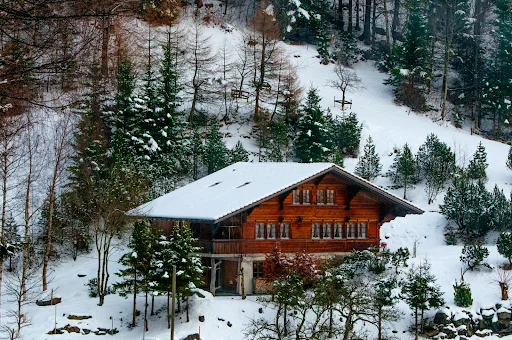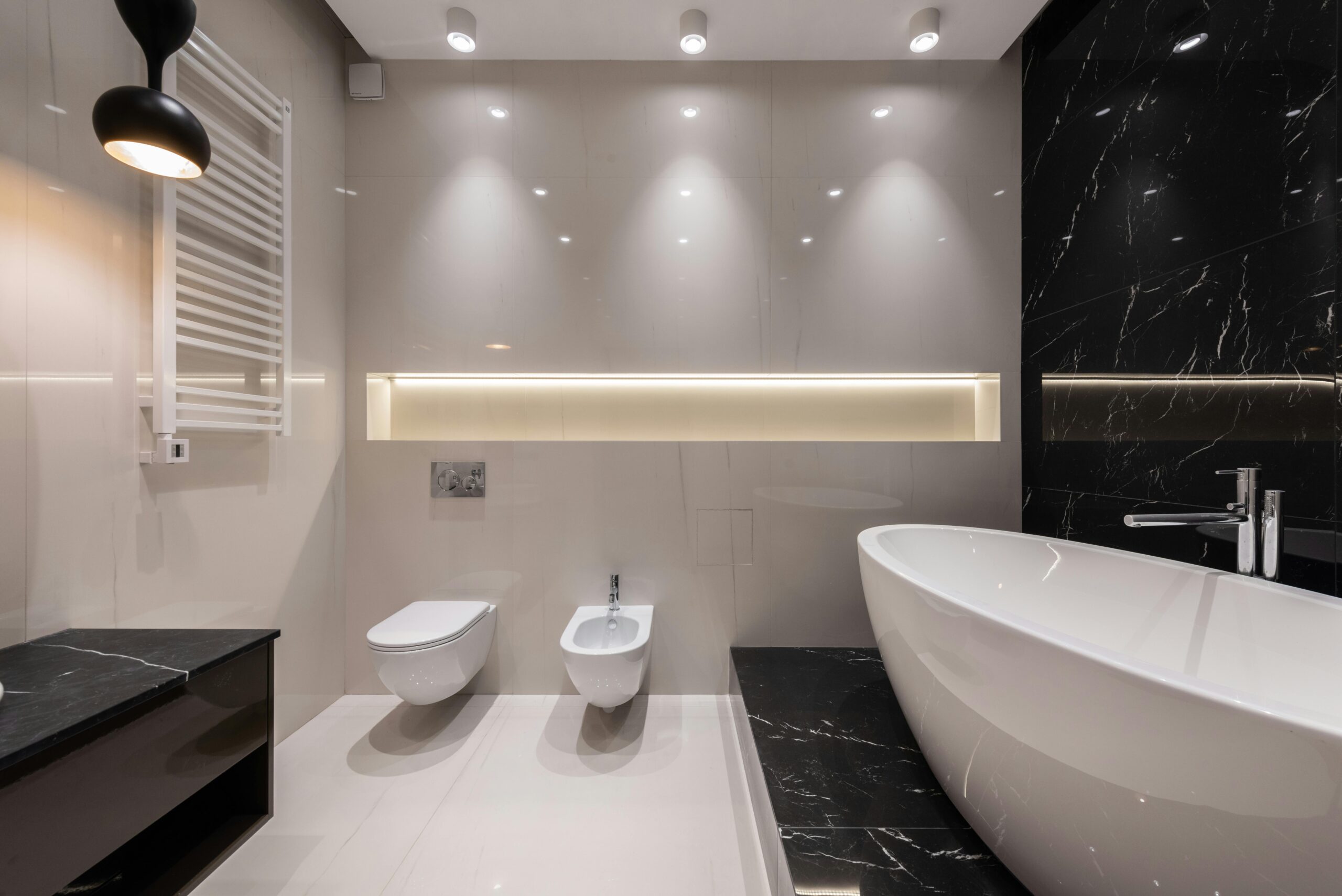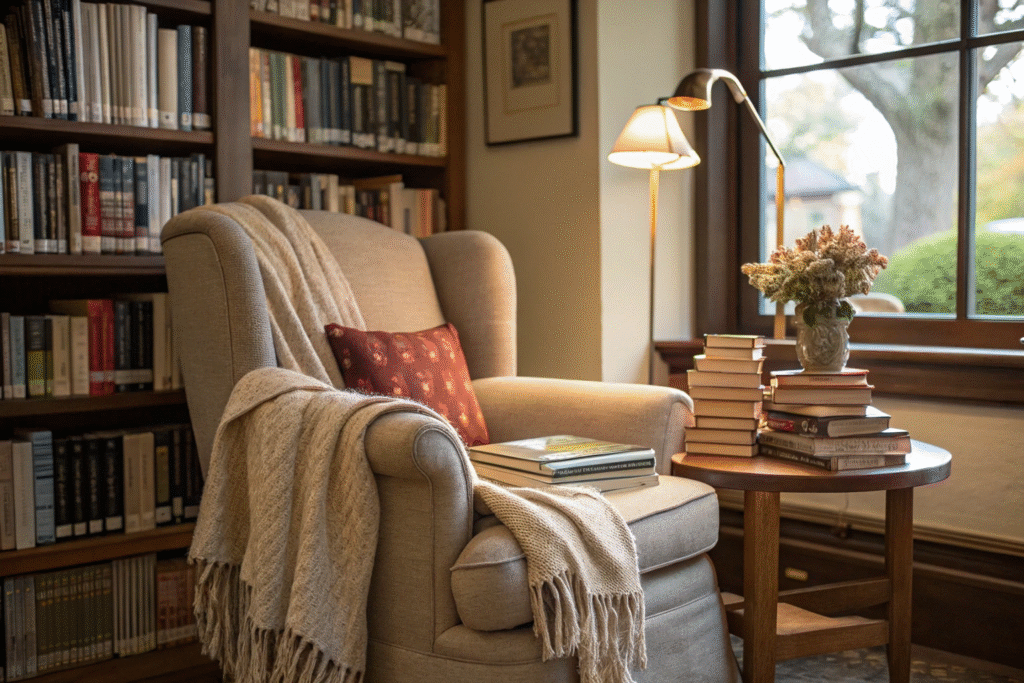HOME IMPROVEMENT
Is Your Roof Ready for a Pittsburgh Winter? Essential Maintenance Tips

Pittsburgh winters can be harsh, with heavy snowfalls, freezing temperatures, and icy conditions. Your roof serves as the first line of defense against the elements, and preparing it for winter is crucial to ensure the safety, comfort, and longevity of your home. Neglecting roof maintenance before winter can lead to issues like leaks, ice dams, and structural damage, which can be costly to repair.
In this comprehensive guide, we’ll cover essential maintenance tips to prepare your roof for a Pittsburgh winter, helping you avoid unnecessary expenses and ensuring your home stays safe and warm throughout the season.
ALSO READ: Skye Marine: Expanding Horizons in Marine Tourism
Why Roof Maintenance Is Crucial Before Winter
Pittsburgh’s winter weather presents unique challenges:
- Heavy Snow Loads: Accumulated snow can put excessive weight on your roof, leading to stress and potential collapse in severe cases.
- Ice Dams: Ice dams occur when snow melts and refreezes at the roof’s edge, preventing proper drainage and causing water to seep under shingles.
- Freeze-Thaw Cycles: Frequent temperature changes can cause roofing materials to expand and contract, leading to cracks and leaks.
Preparing your roof in advance can minimize these risks and ensure your home remains protected during the winter months.
1. Inspect Your Roof Thoroughly
The first step in winter preparation is a comprehensive roof inspection. Look for:
- Missing or Damaged Shingles: Replace any shingles that are cracked, curled, or missing, as they compromise your roof’s ability to keep water out.
- Sagging Areas: These may indicate structural weakness that could worsen under the weight of snow.
- Flashing Issues: Check around chimneys, vents, and skylights for damaged or loose flashing, which can allow water to penetrate your roof.
- Granule Loss: If your shingles are losing granules, it’s a sign of wear and tear that reduces their effectiveness.
Consider hiring a professional roofing contractor in Pittsburgh for a detailed inspection, especially if your roof is steep or difficult to access.
2. Clean Gutters and Downspouts
Clogged gutters can lead to water pooling on your roof, increasing the risk of ice dams. Cleaning your gutters and downspouts is a simple but essential task:
- Remove Leaves and Debris: Clear out all debris to ensure proper water flow.
- Check for Damage: Look for cracks, loose brackets, or rust spots that could prevent effective drainage.
- Install Gutter Guards: These can reduce the need for frequent cleaning by keeping debris out of your gutters.
Properly functioning gutters direct melting snow and rain away from your home, protecting your roof and foundation.
3. Trim Overhanging Branches
Overhanging tree branches pose a significant risk during winter storms. Snow and ice accumulation can cause branches to break, potentially damaging your roof or gutters. Trimming back branches ensures:
- Reduced risk of falling debris during storms.
- Less chance of leaves clogging your gutters.
- Improved sunlight exposure, which can help snow and ice melt faster.
Hire a professional arborist if tree trimming involves large or high branches.
4. Check Your Attic for Insulation and Ventilation
Your attic plays a key role in maintaining your roof’s health during winter. Proper insulation and ventilation help regulate temperature and prevent ice dams:
- Insulation: Ensure your attic has sufficient insulation to keep warm air inside your home. This prevents snow on your roof from melting unevenly.
- Ventilation: Good ventilation allows cold air to circulate in your attic, reducing the likelihood of ice dams. Check for blocked vents or signs of moisture buildup.
A well-insulated and ventilated attic also improves your home’s energy efficiency, saving on heating costs.
5. Address Potential Ice Dam Issues
Ice dams are a common problem in Pittsburgh winters. To prevent them:
- Seal Air Leaks: Identify and seal any air leaks in your attic that allow warm air to escape and cause uneven snow melting.
- Install Ice and Water Shield: This waterproof membrane, installed under shingles, provides an additional layer of protection against water infiltration.
- Consider Heat Cables: In areas prone to ice dams, heat cables can prevent ice from forming along your roof’s edge.
Preventing ice dams can save you from costly repairs and water damage.
6. Schedule Roof Repairs Before Winter
If your roof inspection reveals issues like damaged shingles, weak spots, or worn flashing, address them promptly. Delaying repairs can lead to:
- Increased damage from snow and ice.
- Higher repair costs later.
- Potential safety hazards for your family.
In Pittsburgh, roofing contractors tend to be busiest in the fall, so schedule repairs early to avoid delays.
7. Inspect and Seal Chimneys, Skylights, and Vents
Any penetration through your roof—such as chimneys, skylights, and vents—poses a potential leak risk. Inspect these areas for:
- Cracked Sealant: Reapply sealant to ensure a watertight barrier.
- Loose Flashing: Secure or replace flashing to prevent leaks.
- Debris Accumulation: Clear any debris blocking vents or skylights.
Ensuring these features are sealed and secure will protect your home from water infiltration during winter storms.
8. Prepare for Snow Removal
Heavy snow accumulation can strain your roof and lead to collapse in extreme cases. Be prepared with a plan for snow removal:
- Invest in a Roof Rake: A roof rake allows you to safely remove snow from the ground without climbing onto your roof.
- Know When to Remove Snow: As a rule of thumb, remove snow when it reaches 6 inches or more, especially if your roof has a low slope.
- Hire Professionals for Heavy Snow: If snow accumulation is too heavy or your roof is hard to access, consider hiring a professional snow removal service.
Safe snow removal can prevent damage and prolong the life of your roof.
9. Plan for Emergency Repairs
Despite your best efforts, winter storms can sometimes cause unexpected roof damage. Be prepared for emergencies by:
- Keeping a Tarp on Hand: A tarp can provide temporary protection for a damaged roof.
- Knowing Your Roofing Contractor: Establish a relationship with a trusted Pittsburgh roofing company for quick response in case of emergencies.
- Reviewing Your Home Insurance: Understand what your policy covers in case of winter-related roof damage.
Being prepared can reduce stress and help you address issues quickly.
10. Schedule a Professional Roof Inspection
While DIY inspections and maintenance are valuable, a professional roofing contractor can identify issues you might miss. Pittsburgh-based roofers understand the local climate and can provide tailored advice and services to prepare your roof for winter.
Final Thoughts
Pittsburgh winters can be unforgiving, but with proper roof maintenance, you can protect your home and avoid costly repairs. By inspecting your roof, cleaning gutters, addressing insulation and ventilation, and planning for snow removal, you’ll ensure your roof is ready to face the challenges of the season.
Don’t wait until the first snowfall—start your winter roof preparations today. A little effort now can save you time, money, and stress in the months to come. If you need professional help, reach out to a trusted Pittsburgh roofing contractor to get your roof winter-ready.
HOME IMPROVEMENT
How Waterproof LED Strip Wholesale Is Shaping Modern Lighting Design

Lighting has become more than just a functional necessity—it’s now a major part of modern design, innovation, and lifestyle. From home interiors to commercial buildings and outdoor landscapes, LED technology is redefining how people think about light. Among the most flexible and in-demand products today are waterproof LED strip lights, and for businesses, sourcing from waterproof LED strip wholesale suppliers provides both economic and creative advantages.
There’s always more to learn—Explore More and see what’s trending now!
1. The Evolution of LED Lighting
Over the past decade, LED lighting has revolutionized the global lighting industry. Traditional incandescent and fluorescent bulbs are being replaced by LEDs for their superior energy efficiency, longevity, and environmental benefits.
Among the many LED solutions available, LED strip lights stand out because of their flexibility, slim design, and customizable features. The addition of waterproof protection has further expanded their use, allowing these strips to perform reliably both indoors and outdoors. For lighting companies and resellers, buying through waterproof LED strip wholesale channels means access to cutting-edge products at competitive prices.
2. Why Waterproof LED Strips Are in High Demand
Waterproof LED strips offer the same aesthetic benefits as regular LED strips but with extra protection against moisture, dust, and weather exposure. They are sealed with silicone, epoxy, or polyurethane coatings to achieve IP65, IP67, or IP68 ratings.
This durability makes them ideal for outdoor architecture, signage, bathrooms, kitchens, marine lighting, and even vehicles. Because of their versatility, waterproof LED strip wholesale suppliers are seeing growing global demand from contractors, interior designers, and lighting retailers.
3. Applications Across Multiple Industries
One of the biggest advantages of waterproof LED strips is their adaptability. They fit into nearly any lighting project, including:
- Residential use: under cabinets, staircases, patios, and pools
- Commercial lighting: hotels, offices, restaurants, and shopping centers
- Architectural decoration: building outlines, bridges, and monuments
- Retail and signage: product displays and illuminated advertising
- Automotive and marine: boats, RVs, and outdoor vehicles
By purchasing from waterproof LED strip wholesale sources, businesses can easily supply these diverse markets without worrying about performance under different environmental conditions.
4. Benefits of Buying Waterproof LED Strips Wholesale
For distributors, contractors, and importers, buying wholesale brings several clear advantages:
a. Cost Savings
Wholesale purchasing directly from factories eliminates middlemen and reduces per-unit costs, allowing businesses to maintain higher profit margins.
b. Product Consistency
Reliable wholesale suppliers maintain strict quality control and use branded LED chips to ensure color uniformity, brightness stability, and long lifespan.
c. Customization Options
Many suppliers offer OEM/ODM services, letting you choose color temperature, IP rating, voltage (12V/24V), and packaging style to suit your market needs.
d. Scalability
Wholesale ensures steady supply for large-scale projects and seasonal demands—essential for maintaining business stability.
These benefits make waterproof LED strip wholesale not just a purchasing decision but a strategic business move for long-term success.
5. Energy Efficiency and Environmental Responsibility
Sustainability is now a central concern for both businesses and consumers. LED strip lights are far more efficient than traditional lighting, converting most energy into visible light rather than heat. This results in up to 80% energy savings and significantly lower carbon emissions.
When you buy from a waterproof LED strip wholesale supplier, you also ensure compliance with global environmental standards like RoHS and CE. Many modern factories now use eco-friendly materials and recyclable packaging, aligning with global green initiatives.
6. Design Flexibility and Creativity
Lighting designers and architects love LED strips for their flexibility and visual impact. Waterproof models can be bent, cut, or shaped to fit various designs—from sleek minimalism to bold outdoor displays.
Because they are available in different colors (white, RGB, RGBW, or tunable white), they can create both functional and decorative effects. Warm white light can make a space cozy and inviting, while cool white enhances focus and cleanliness. For public spaces and entertainment venues, RGB strips add vibrant color transitions that attract attention.
Sourcing from waterproof LED strip wholesale ensures you always have access to the full range of color options and design variations.
7. Technological Advancements and Smart Lighting
The future of lighting lies in smart control systems, and waterproof LED strips are no exception. Today’s leading suppliers are integrating Wi-Fi, Bluetooth, and voice control capabilities into their waterproof LED strips.
Through mobile apps or smart assistants like Alexa and Google Home, users can adjust brightness, color, and timing schedules with ease. Businesses buying from wholesale suppliers can stay ahead of competitors by offering smart-ready products to their customers.
8. Choosing the Right Waterproof LED Strip Wholesale Partner
Not all suppliers offer the same quality or service. When choosing a wholesale partner, consider these key factors:
- Product Certifications: Look for CE, RoHS, UL, or ETL compliance.
- Material Quality: Check whether the coating and PCB materials are heat-resistant and durable.
- Production Capacity: Ensure the factory can handle large orders and offer consistent lead times.
- Testing Procedures: Reliable suppliers conduct waterproof, aging, and brightness tests before shipment.
- After-Sales Service: Technical support, warranty terms, and sample testing options are essential.
Building a long-term relationship with a trustworthy waterproof LED strip wholesale supplier helps you maintain stable product lines and brand reputation.
9. Global Market Opportunities
The global LED market is expanding rapidly, with strong demand coming from North America, Europe, and the Middle East. Outdoor architecture, smart city projects, and home automation are driving this growth.
For importers and lighting brands, this presents a huge opportunity. By sourcing waterproof LED strip lights wholesale, you can enter multiple sectors—residential, commercial, and industrial—while maintaining flexible pricing and high profit margins.
10. The Future of Waterproof LED Strip Lighting
As technology evolves, waterproof LED strips will continue to improve in brightness efficiency, flexibility, and intelligence. New developments like COB (Chip-on-Board) technology offer smoother, dot-free illumination, while advances in silicone extrusion make waterproofing more reliable and visually clean.
Businesses that establish strong supply chains with LED Strip manufacturer today will be better positioned to lead the market tomorrow.
Conclusion
Lighting is no longer just about brightness—it’s about experience, design, and sustainability. Waterproof LED strip wholesale solutions empower businesses to meet modern lighting demands with creativity, reliability, and affordability.
Whether for outdoor architecture, retail decoration, or smart home systems, waterproof LED strips offer the perfect combination of durability and elegance. By partnering with a dependable wholesale supplier, you can illuminate every corner of the modern world—beautifully, efficiently, and profitably.
There’s always more to learn—Explore More and see what’s trending now!
HOME IMPROVEMENT
Top Wall Options for Your Bathroom

You think you’re ready for a bathroom makeover?
For some unknown reason, walls in this ultimate sanctuary do not always get the attention they deserve. Whether you would like to create a cozy SPA Pinterest-like haven, a bold, ultra-modern look, or something very simple using wall wood decor, it’s the finish that can make or…break it.
If you are tired of classy tiles, stay with us to get more cool ways to dress up your bathroom walls.
Vinyl Wallpaper
Why does it rock in a bathroom? Because it’s waterproof, functional, and stylish. It’s crucial to stay away from paper coverings because they degrade in moist places. Luckily, today’s market offers a bunch of sophisticated colors, styles, and patterns. At the same time, you should remember that this material doesn’t stick well to flat, uneven, or matte surfaces. They are most effective when they’re not next to the shower stall, sink, and tub.
Natural Stone
Here’s the idea: use granite, marble, or slate stone to create an accent wall. Each material actually screams luxury! Natural stone brings depth and texture to the dullest bathroom, adding timeless elegance as well. Plus, if you adorn one wall only, you’ll save some money for other décor.
Ceramic Tile
If you’d like to try something new yet with a pinch of classiness, ceramic tile is the answer. Your only task is to install and maintain it properly to avoid moisture. In most cases, bathrooms have walls that are only partially tiled. You’re welcome to either paint or wallpaper the rest of the surface.
Paint
Choose the finest quality paint made for rooms with high humidity levels. We recommend using paint with gloss and high mildew and mold resistance.
Stuck in the middle of color options? Well, it’s the bathroom type that dictates the colors:
- Rooms without windows look best with lighter paint colors.
- Spaces with lots of natural light call for both dark and light hues.
Are you decorating a small bedroom? Try two colors at the same time. Thus, you’ll have the main color and an accent one in either darker or lighter hues. How about more drama in the interior? Add a mirror!
How-to Tips on Choosing Bathroom Wall Finishes
Are you tackling a new build? Or, perhaps, you are simply doing a revamp of your bathroom? If you do not know how to pick the best treatments for the walls of your special place of peace and solitude, here are some hints for you exclusively:
- Style. If you’re looking to revamp a powder room that has no shower, consider using beadboard or wallpaper.
- Durability. How often are you going to use the room? If it’s daily, choose tiles.
- Easy cleaning. If you prefer surfaces that can be easily and quickly cleaned, we recommend using paint.
- Budget-friendliness. If dealing with a tight budget, tileboard offers an easy way to hide imperfections without spending a lot of $.
The raison d’être of your bathroom is to provide you with a private oasis away from the busy life. The walls there do more than protect you from moisture – they make space 100% complete. And it does not matter what you choose – microcement or glossy tiles, the right treatment can turn your bathroom into a SPA-like conversation starter.
HOME IMPROVEMENT
How to Create a Relaxing Bedroom Décor

A restful bedroom is equal parts comfort, calm, and personal meaning. It is the place where the day dissolves and your energy quietly resets, so every choice should support better sleep and softer mornings. The goal is simple: curate touchable textures, quiet colours, thoughtful lighting, and storage that keeps visual noise out of sight. Below is a clear, practical guide to help you shape a soothing sanctuary that looks intentional and feels deeply comfortable.
Start With the Bed: Comfort First
The bed is the anchor of the room and the foundation for recovery. Choose a mattress that supports your sleeping position and keeps your spine neutral. Sheets in breathable fibres such as cotton percale, sateen, or linen help regulate temperature through the night. Pillows should match how you sleep: back sleepers need moderate loft, side sleepers often prefer higher loft, and stomach sleepers benefit from something flatter. Layering adds both comfort and polish: a light quilt or duvet for insulation, a throw for seasonal warmth, and two or three decorative cushions for visual balance without overcrowding.
- Rotate the mattress per manufacturer guidance to extend its life.
- Wash sheets weekly and pillow protectors twice monthly to maintain a fresh sleep surface.
- Choose a bed frame that echoes your style: upholstered and soft for a tranquil look, wood slats for an airy modern profile, or classic spindle for timeless character.
Choose Soothing Colours and Thoughtful Lighting
Colour sets the emotional temperature of the room. Gentle neutrals and muted hues are ideal because they relax the eye. Think pale stone, cloud grey, warm beige, misty blue, or soft sage. Reserve saturated colours for small accents so the palette remains restful. Lighting should be layered and controllable. Use a dimmable overhead or flush mount for general illumination, bedside lamps for reading, and a soft accent source to create evening ambiance. If possible, put lights on separate switches to tailor brightness for winding down versus getting ready.
- Warm white bulbs create a calmer mood in the evening; cooler tones suit morning routines.
- Light-blocking curtains or layered window treatments help stabilise sleep by reducing stray light.
- Place task lights at shoulder height when seated to avoid glare and eye strain.
Create a Cozy Reading Nook

A small area dedicated to quiet time turns the bedroom into a retreat. Position a compact armchair or chaise near natural light, add a side table for a book and tea, and include a flexible reading lamp. The surface should be large enough for essentials but not so big that it gathers clutter. A small plant or framed photo introduces life and intimacy without visual noise. Choose a rug that anchors the nook so it reads as its own calming zone inside the room.
- Keep a lightweight throw within reach so the ritual feels inviting in any season.
- Use a bookmark and tray to end reading sessions cleanly and keep the top uncluttered.
- Consider a wall-mounted sconce to free floor space in smaller rooms.
Optimise Storage With Custom or Modular Closets
Clutter is the enemy of calm. Efficient storage prevents visual distraction and shortens morning decisions. A custom or modular closet with the right mix of hanging space, shelves, drawers, and cubbies helps every item land in an appropriate place. Use vertical height with double hanging where possible and add shallow drawers for small items. Baskets or fabric bins corral seasonal pieces. Labelling is optional but helpful if multiple people share the wardrobe or if you rotate items by season.
- Group clothing by type and colour to reduce decision fatigue.
- Install soft-close hardware to minimise noise late at night and early morning.
- Reserve a top shelf for seldom-used items to keep everyday pieces easy to reach.
Enhance Comfort With Soft, Layered Textures
Texture is what your body and mind register instantly in a bedroom. Mix silky-smooth sheets with a nubby throw, a low-pile rug with a velvet cushion, or linen curtains with a softly upholstered headboard. These tactile changes add richness without bright colour. Place a plush rug where your feet land in the morning for a pleasant first sensation of the day. An upholstered bench or small ottoman at the foot of the bed provides a place to set clothing and softens the room’s geometry.
- Blend two to three textures per zone rather than many to keep the look coherent.
- Choose washable covers for throws and cushions to simplify upkeep.
- Prioritise breathable fibres to avoid overheating and to improve sleep quality.
Minimise Clutter for Tranquillity
Clear surfaces calm the mind. Keep nightstands simple: a light, a book, a small carafe, and a tray for jewellery or glasses. Use under-bed bins or rolling drawers for low-profile storage, and choose dressers with well-fitting drawers so items do not migrate to the top. Set a weekly ten-minute reset to return stray objects to their homes. The aim is not austerity; it is deliberate editing so the bedroom looks cared for and feels quiet.
- Hide cords and chargers in a cable box or in-drawer organiser for visual silence.
- Limit open shelving to a few beautiful, meaningful items to avoid dust and clutter.
- Keep laundry baskets lidded or behind doors to preserve the room’s calm tone.
Personalise With Meaningful Décor

Personal touches give emotional warmth without overwhelming the senses. Display a small set of framed photos, a travel memento, or a vintage clock that tells a story. A single statement piece on the wall can be more serene than many small items. If you love colour, weave it into art and soft goods rather than the entire wall so you can refresh easily over time. In the middle of your planning, consider how art scale and palette support the mood you want. For size-specific pieces that harmonise with your scheme, explore curated large-format works at https://tryartwork.com/ to anchor the room with one quiet, confident gesture.
- Repeat one accent colour from the art in two or three textiles for cohesion.
- Hang art at eye level when standing for statement pieces; lower for seated vignettes.
- Use non-reflective glazing in bright rooms to reduce glare and preserve softness.
Small Habits That Keep the Room Restful
Sanctuary is as much habit as design. Create simple end-of-day rituals that signal the nervous system to slow down. Five minutes of light tidying, closing the curtains, dimming the lamps, and setting out tomorrow’s outfit all contribute to a sense of order and ease. Keep a notebook by the bed to capture runaway thoughts so they do not follow you into sleep. Scent can help too; a subtle diffuser with calming notes or freshly laundered bedding turns bedtime into a cue for rest.
- Open windows briefly in the morning for fresh air exchange when weather allows.
- Rotate seasonal textiles to keep the space comfortable without visual overload.
- Schedule quarterly linen and pillow refreshes to maintain a clean, hotel-like feel.
Bringing It All Together
A relaxing bedroom comes from aligning comfort, colour, light, storage, and meaning. Start with the bed and bedding you love, soften the palette, layer your lighting, carve out a reading nook, make storage effortless, and curate a few personal pieces that make you smile. Aim for fewer, better choices and let every object earn its place. When the surfaces are calm, the textures inviting, and the lighting gentle, the room begins to breathe with you. That is the essence of a bedroom sanctuary: a space that quietly restores you every night and welcomes you back every morning.

 GENERAL4 months ago
GENERAL4 months ago5 Factors That Affect Tattoo Removal Success

 ENTERTAINMENT2 days ago
ENTERTAINMENT2 days agoExploring the Kristen Archives: A Treasure Trove of Erotica and More

 LIFESTYLE8 months ago
LIFESTYLE8 months agoThe Disciplinary Wives Club: Spanking for Love, Not Punishment

 TECHNOLOGY8 months ago
TECHNOLOGY8 months agoBlog Arcy Art: Where Architecture Meets Art

 LIFESTYLE1 month ago
LIFESTYLE1 month agoWho Is Sandra Orlow?

 ENTERTAINMENT10 months ago
ENTERTAINMENT10 months agoThe Ultimate Guide to Shillong Teer Hit Number: How to Predict Your Next Win

 LIFESTYLE4 weeks ago
LIFESTYLE4 weeks agoWho Is Wife Crazy Stacie

 LIFESTYLE3 weeks ago
LIFESTYLE3 weeks agoBerniece Julien: The Private Life of Tyson Beckford’s Partner









